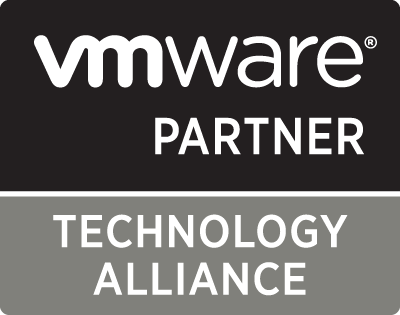KVM virtual machine live migration
2021-05-26 | Nick Zhao
For KVM dynamic migration, there are the following suggestions and precautions
Try to use a network shared storage system on the source host and the destination host to save the client disk image. For example: NFS, ISCSI, Glusterfs, etc.
In order to improve the success rate of dynamic migration, try to perform dynamic migration on hosts with the same type of CPU. Although KVM dynamic migration also supports migration from Intel platform to AMD platform, it is not recommended to do so in terms of security and stability.
64-bit clients can only run migration between 64-bit hosts, while 32-bit clients can migrate between 32-bit hosts and 64-bit hosts.
During dynamic migration, the name of the migrated client is unique, and there cannot be a client with the same name as the migrated client of the source host on the destination host.
The software of the destination host and the source host are the same as possible as VMware, kvm, xen, etc.
V2V migration
Deploy NFS server to realize file sharing between Linux and Linux. NFS usually runs on port 2049
Because before using the NFS service for file sharing, you need to use the RPC (Remote Procedure Call) service to send information such as the IP address and port number of the NFS server to the client. Therefore, before starting the NFS service, you also need to restart and enable the rpcbind service program.
Server-side configuration:
Downlaod nfs and rpcbind
1 [root@localhost ~]# yum install nfs-utils rpcbind -y
Configure nfs file
[root@localhost ~]# mkdir /nfsdate[root@localhost ~]# vim /etc/exports/nfsdate 192.168.127.133/24(rw)
Reboot nfs and rpcbind
1 [root@localhost ~]# systemctl restart rpcbind nfs
Client configuration
Download nfs-utils
1 [root@localhost ~]# yum install nfs-utils -y
View shared file
1 [root@localhost ~]# showmount -e 192.168.127.1302 Export list for 192.168.127.130:3 /nfsdate 192.168.127.133/24
Mount server nfs to local
1 [root@localhost ~]# mkdir /nfsdate 2 [root@localhost ~]# mount -t nfs 192.168.127.130:/nfsdate /nfsdate 3 [root@localhost ~]# df -h 4 文件系统 容量 已用 可用 已用% 挂载点 5 /dev/mapper/cl-root 17G 8.3G 8.8G 49% / 6 devtmpfs 478M 0 478M 0% /dev 7 tmpfs 489M 0 489M 0% /dev/shm 8 tmpfs 489M 7.1M 482M 2% /run 9 tmpfs 489M 0 489M 0% /sys/fs/cgroup10 /dev/sda1 1014M 141M 874M 14% /boot11 tmpfs 98M 0 98M 0% /run/user/012 192.168.127.130:/nfsdate 17G 10G 7.1G 59% /nfsdate
The server backs up the configuration file (startup file) /etc/libvirt/qemu/ of the virtual machine to be migrated to /root and moves the disk file /var/lib/libvirt/images/ to the newly created shared file /nfsdate
Move the disk file of vm1 to the shared file
1 [root@localhost ~]# cd /var/lib/libvirt/images/2 [root@localhost images]# ls3 centos7.0.qcow2 CentOS-7-x86_64-DVD-1611.iso test.qcow2 vm1.qcom2 vm2.qcow24 [root@localhost images]# mv vm1.qcom2 /nfsdate
Back up the configuration file of vm1 to /root
[root@localhost ~]# cd /etc/libvirt/qemu/[root@localhost qemu]# lscentos7.0.xml networks test.xml vm1.xml vm2.xml[root@localhost qemu]# cp vm1.xml /root
Delete vm1 virtual machine domain
1 [root@localhost qemu]# ls2 centos7.0.xml networks test.xml vm1.xml vm2.xml3 [root@localhost qemu]# virsh undefine vm14 域 vm1 已经被取消定义5 6 [root@localhost qemu]# ls7 centos7.0.xml networks test.xml vm2.xml
Switch to /root to modify the vm1 configuration file and modify its disk file path
1 [root@localhost ~]# vim vm1.xml2 <disk type='file' device='disk'>3 <driver name='qemu' type='qcow2'/>4 <source file='/nfsdate/vm1.qcom2'/> #把源路径修改为/nfsdate5 <target dev='vda' bus='virtio'/>6 <boot order='1'/>7 <address type='pci' domain='0x0000' bus='0x00' slot='0x07' function='0x0'/>8 </disk>
Restore vm1
1 [root@localhost ~]# virsh define vm1.xml 2 定义域 vm1(从 vm1.xml) 3 4 [root@localhost ~]# virsh list --all 5 Id 名称 状态 6 ---------------------------------------------------- 7 - centos7.0 关闭 8 - test 关闭 9 - vm1 关闭10 - vm2 关闭
Both the server and the client need to do domain name resolution
1 [root@localhost ~]# vim /etc/hosts2 127.0.0.1 localhost localhost.localdomain localhost4 localhost4.localdomain43 ::1 localhost localhost.localdomain localhost6 localhost6.localdomain64 192.168.127.130 yun15 192.168.127.133 yun2
View shared files on client server
[root@localhost ~]# cd /nfsdate[root@localhost nfsdate]# lsvm1.qcom2
Verify in the host
Create a connection in the host, which is shared by the two hosts.
It is recommended to modify the host names of the two hosts to avoid the same host names. Prevent some unnecessary errors.
hostnamectl set-hostname 主机名exit
Click Connect, then enter yes and account password respectively, the connection is created
Because it is a hot migration, turn on the migrated virtual machine; then click Migrate
Share on:
 English
English


















